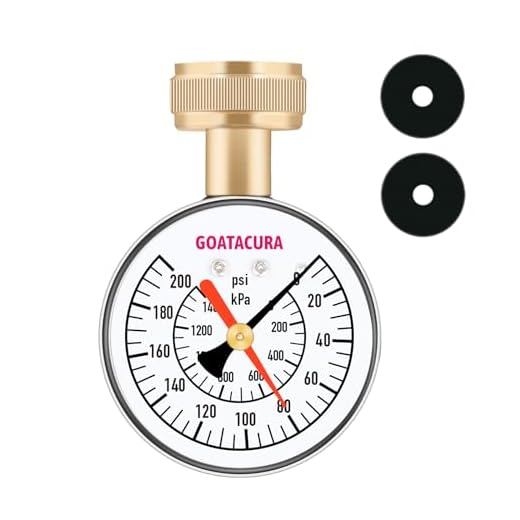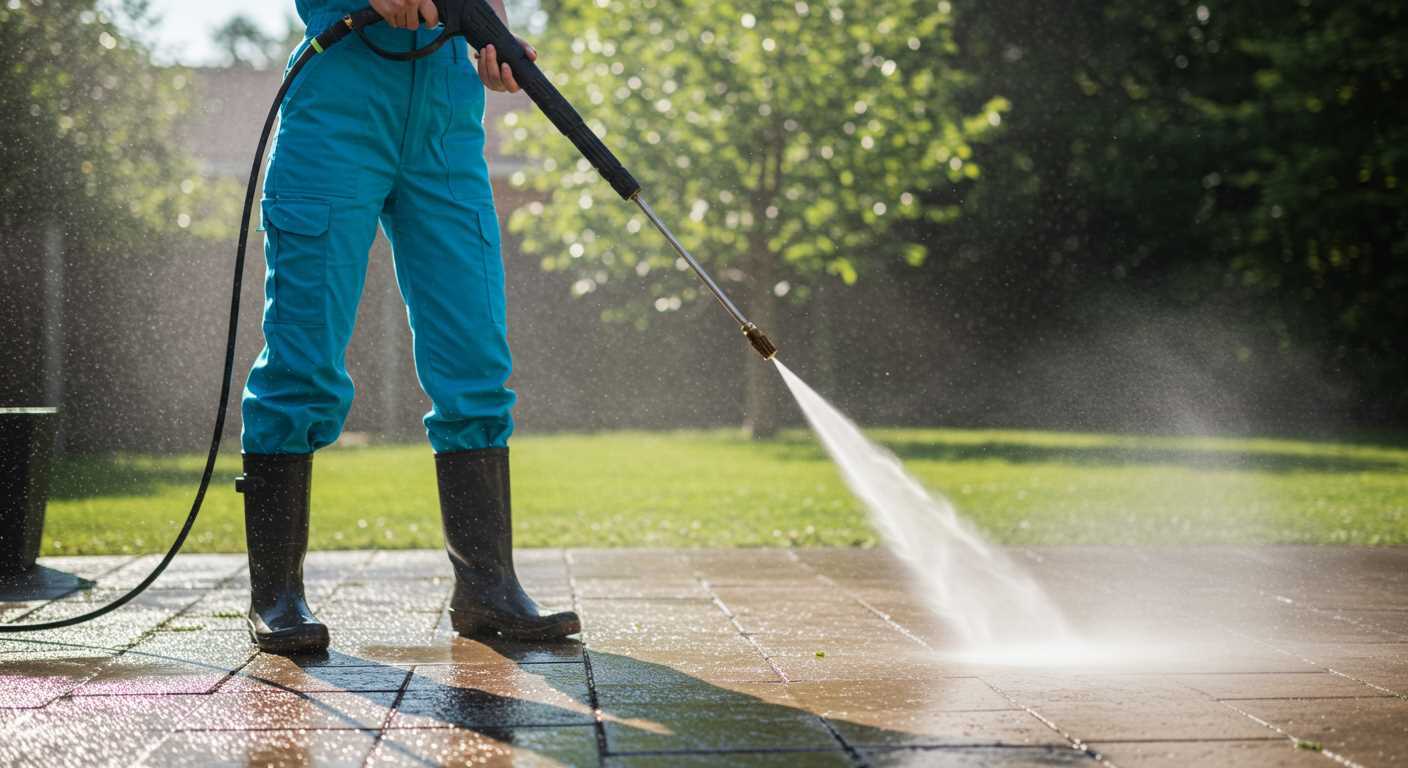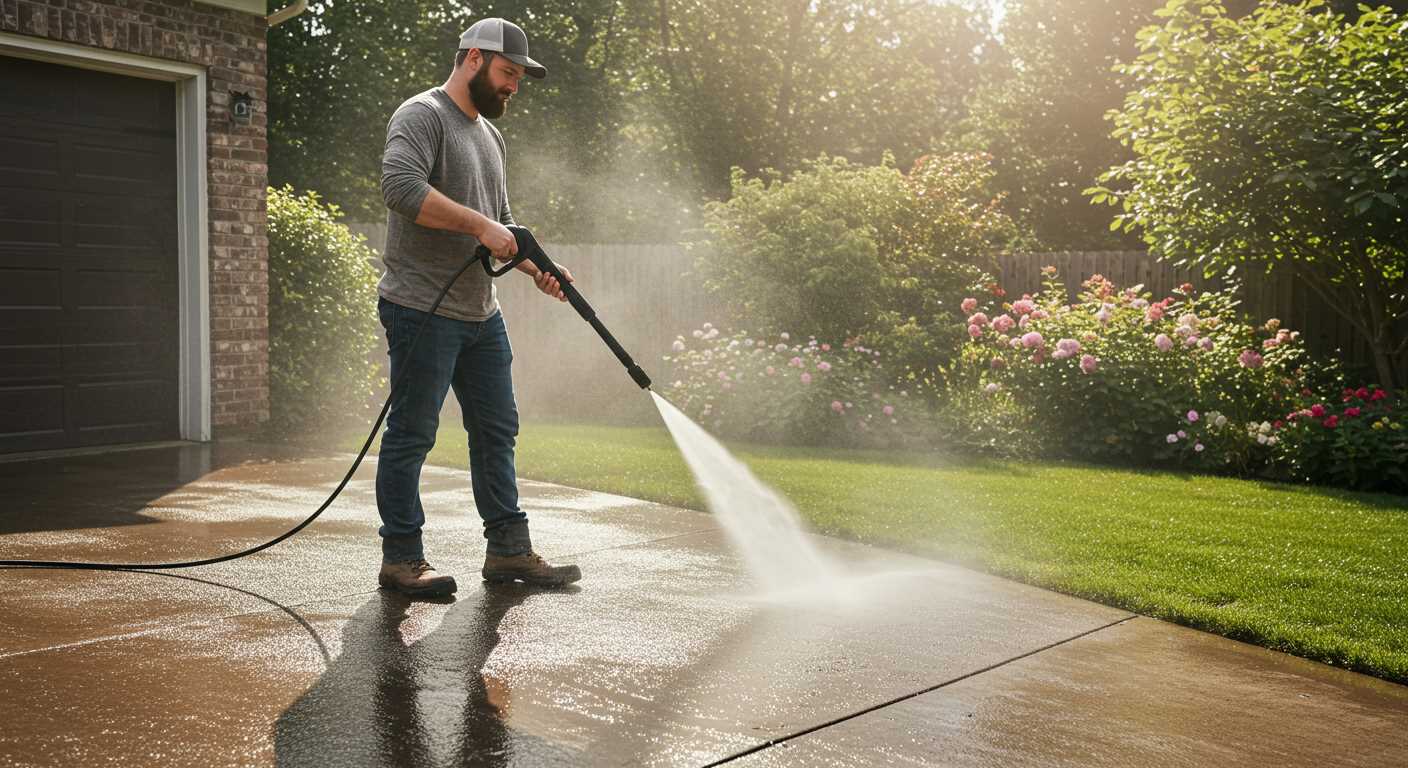



For optimal results with a cleaning unit, the water supply should typically be around 20 to 30 litres per minute. This range ensures efficient operation and maximises cleaning effectiveness, allowing the equipment to perform at its best. Low flow rates can lead to inadequate cleaning and potential damage to surfaces.
The inlet pressure required hovers between 20 and 80 psi. Staying within this specification prevents operational issues, ensuring that the device can draw water effectively without compromising its functionality. Exceeding this threshold can result in damage to internal components.
Always verify these specifications with the manufacturer’s recommendations for your specific model. Variations in design may necessitate different requirements, so consulting the manual can provide tailored guidance for optimal performance. Adhering to these parameters guarantees that your cleaning tool operates smoothly and achieves exceptional results in your cleaning tasks.
Optimal Pressure Requirements for a Cleaning Unit
To achieve effective cleaning results, aim for a range of 1300 to 3100 psi. This variation allows for flexibility based on specific tasks.
Here’s a guideline based on typical applications:
- Light-duty tasks like washing cars or patios require approximately 1300-1900 psi.
- Medium-duty jobs, such as cleaning siding or driveways, benefit from 2000-2500 psi.
- Heavy-duty applications, including stripping paint or washing heavy machinery, necessitate 2600-3100 psi.
Maintain a consistent flow rate of at least 1.5 gallons per minute (GPM) for optimal performance. Lower flow rates can lead to inadequate cleaning or extended time spent on tasks.
It is crucial to consider the nozzle size and type, as they impact both performance and safety:
- Zero-degree nozzles: Offer a concentrated stream for tough stains but may damage softer surfaces.
- 15-degree nozzles: Suitable for hard surfaces, providing a balance between power and coverage.
- 25-degree nozzles: Ideal for general cleaning, offering a wider spray pattern.
- 40-degree nozzles: Best for delicate tasks like washing vehicles or painted surfaces.
When selecting a model, consult manufacturer specs to ensure compatibility with intended usages. Knowing the specific requirements of your cleaning tasks will guide you in selecting the right option for optimal results.
Understanding Pressure Ratings for Pressure Washers
To effectively clean a variety of surfaces, choose a unit boasting a rating of at least 2,000 PSI (pounds per square inch) for residential tasks. This level of force is optimal for most outdoor projects, from driveways to patio furniture.
Identifying the Right Class for Your Needs
Basic residential models range from 1,300 to 2,300 PSI, suitable for light cleaning tasks such as washing cars and cleaning outdoor furniture. Mid-range machines typically deliver between 2,300 and 3,500 PSI, perfect for heavy-duty jobs like tackling concrete surfaces or removing stubborn mildew. For commercial use or the most challenging tasks, consider equipment exceeding 3,500 PSI, which excels in efficiency and speed.
GPM Considerations
Besides PSI, the gallons per minute (GPM) rating is equally vital. A higher GPM means more water flow, enhancing cleaning power. Aim for a minimum of 1.5 GPM; this will effectively accompany the pressure rating for most cleaning applications.
Determining Minimum Water Pressure for Household Use

To ensure optimal performance from your cleaning equipment, a minimum of 20 psi is advisable for effective household applications. This value allows equipment to operate efficiently without compromising the cleaning outcome.
Here are some key points to take into account:
- Connection Type: Standard garden hoses typically deliver around 30-60 psi, which is adequate for most domestic models.
- Source of Supply: Assessing your main supply is crucial. City water systems usually provide sufficient force, while well systems may require enhancement techniques.
- Hose Length: Longer hoses can lead to pressure loss; keeping your hose short ensures consistent delivery.
- Nozzle Selection: Different nozzles alter the flow and intensity. Selecting the right nozzle for the task affects output without needing excessive variables.
Regularly checking the supply and ensuring unobstructed flow is beneficial. Filters can become clogged, diminishing performance. Maintain good practices by inspecting hoses, connections, and the supply system periodically.
In summary, confirming that your system consistently meets or exceeds 20 psi will facilitate efficient operation. Balancing your setup will significantly enhance your cleaning activities.
Impact of Nozzle Size on Required Water Pressure
The size of the nozzle significantly influences the effectiveness of any cleaning task. A smaller orifice creates a tighter stream, which requires higher force to maintain performance. Conversely, larger nozzles disperse the flow, resulting in a broader spray pattern that demands less intensity to achieve optimal results.
Nozzle Types and Their Impact

When selecting a nozzle, consider the following categories:
| Nozzle Type | Orifice Diameter (mm) | Recommended Use |
|---|---|---|
| Zero Degree | 2.5 | Targeted cleaning, tough stains |
| 15 Degree | 3.0 | Stripping paint, mildew removal |
| 25 Degree | 4.0 | General cleaning, car washing |
| 40 Degree | 5.0 | Gentle cleaning, delicate surfaces |
Using the appropriate nozzle ensures the best cleaning experience while optimising energy use. For example, utilising a narrow nozzle on surfaces that require gentle treatment can exert excessive strain on the equipment and potentially damage the target area.
Optimising Performance
To strike a balance between cleaning efficacy and machine performance, start with a wider nozzle and adjust as needed. If higher intensity is necessary, gradually switch to narrower options. Monitoring the results is essential to avoid unnecessary wear and tear. Testing different nozzles allows for finding the ideal balance for various tasks, ensuring both efficiency and longevity of the device.
Flow Rate Effects on Cleaning Equipment Performance
A minimum flow rate of 1.5 to 3.5 gallons per minute (GPM) optimises performance. When considering the size of the nozzle, higher flow rates can increase cleaning efficiency by applying more cleaning solution across surfaces. Equipment designed for greater flow rates typically delivers superior results in less time, making it suitable for larger tasks.
Specific Applications and Recommendations
For light cleaning tasks around the home, a flow rate near 1.5 GPM suffices; however, tackling more stubborn stains or larger areas demands 2.5 GPM or above. Industrial-grade devices often exceed 4 GPM, providing significant advantages for heavy-duty use. Assessing your intended use is crucial when selecting the right model, as inadequate flow may lead to extended cleaning times and unmet expectations.
Impact on Cleaning Agents
A higher flow rate enhances the distribution of cleaning agents, improving their effectiveness. When using soap or specialised cleaners, check the manufacturer’s guidelines for optimal mixing ratios. Those designed for higher GPM units often require adjustments to ensure proper application without wasting resources.
Evaluating Water Source Pressure: Wells vs. Municipal Supply
.jpg)
Municipal supply typically offers a consistent flow rate of approximately 40 to 60 psi, which generally suffices for a variety of cleaning tasks. In contrast, well systems can vary widely based on depth and pump specifications. It’s not uncommon for wells to deliver anywhere from 20 to 50 psi. Thus, assessing your well’s specifications is critical.
For those relying on wells, ensuring the pump’s capability is essential. If the output is on the lower end, consider upgrading to higher-rated pumps or installing pressure-boosting equipment. This enhances performance without straining existing infrastructure.
Additionally, fluctuations in pressure are common with well systems during peak usage times, such as morning hours. Keeping an eye on peak demands helps anticipate drops in output that might affect your equipment’s efficiency. Consider installing a pressure tank; this can mitigate immediate fluctuations while storing excess supply for your usage needs.
Municipal systems may present benefits like fewer maintenance requirements and reliable service. However, water quality can vary, so testing for contaminants is advisable. Wells, while potentially less stable, offer independence from municipal restrictions, allowing for more extensive usage.
Ultimately, understanding the characteristics of each source will guide you in selecting the correct equipment and modifications, ensuring optimal cleaning efficiency and longevity of your tools.
Adjusting Pressure Settings for Different Cleaning Tasks
Start with a lower adjustment for delicate surfaces like painted wood or automobiles, typically around 1200-1500 PSI. This minimises the risk of damage while still achieving effective cleaning.
For medium-duty tasks such as cleaning patios or brickwork, aim for 1500-2200 PSI. This level is adequate to tackle grime without compromising the integrity of the materials.
Heavy-duty applications like removing grease from concrete driveways require settings between 2500-3000 PSI. At this range, the equipment can efficiently loosen tough stains without excessive effort.
Consideration of Nozzle Types
Utilise various nozzle types to complement the pressure settings. A wider spray pattern, like a 25-degree nozzle, spreads the force over a greater area, making it suitable for softer surfaces. Conversely, a 0-degree nozzle produces a concentrated jet ideal for tough stains on durable materials.
Modifying Flow Rates
Adjusting the flow rate can also enhance cleaning efficacy. Higher flow rates, when paired with appropriate pressure settings, assist in rinsing debris effectively. Always check the specifications of your unit to align flow levels correctly with chosen pressure settings.








